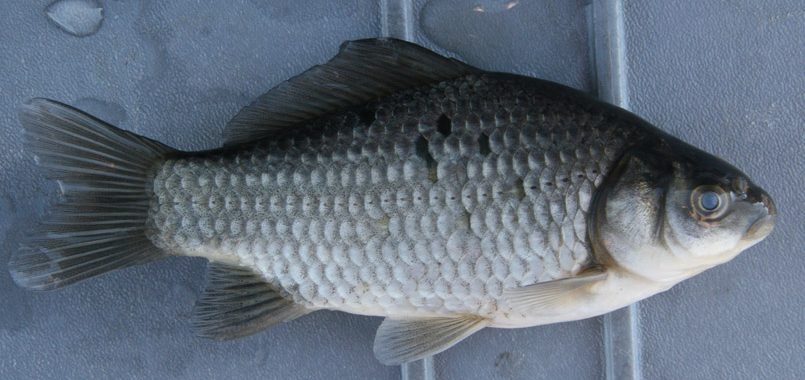Thesis Title: Establishment, spread and impact of Prussian Carp (Carassius gibelio), a new invasive species in Western North America.
Author: Cassandra Docherty
Abstract
Freshwater ecosystems are some of the most imperilled on the planet. Invasive species pose the second largest threat to freshwater organisms after habitat degradation. Aquatic introductions have led to extinctions, competition for resources, hybridization, the introduction of foreign pathogens and the alteration of ecosystem structure and function. One of the most recent invaders in western North America is Prussian Carp (Carassius gibelio). The first record of this species in North America was in 2000, in Alberta, Canada, yet little is known about its invasion, current distribution or effects on stream communities. In Eurasia, Prussian Carp have been assessed as one of the most harmful invasive fish species because of its ability to reproduce asexually, high environmental tolerances and preference for human modified habitats. The arrival of Prussian Carp in western North America poses concerns for many native freshwater species. Therefore, the objectives of this study were to assess the severity of Prussian Carp’s invasion in western North America by 1) mapping Prussian Carp distribution and rate of spread since its initial arrival; 2) analysing the impact of Prussian Carp on native fish species; and 3) identifying environmental parameters that predict Prussian Carp presence. Using kernel density functions, we found that the range of Prussian Carp increased in Alberta, Canada from approximately 500 km² since its arrival (estimated as 2000) to over 20,000 km² in 2014. The rate of spread is increasing at an exponential rate over five year increments (e.g. 1.6, 2.1, and 2.3 times), suggesting rapid expansion since first detection. Our results did not indicate that Prussian Carp have a negative effect on native fish species, which is likely due to its recent expansion into these areas and an already depauperate species community. The most important habitat variables that best predicted the presence of Prussian Carp were: dense aquatic vegetation, high conductivity, pH, high dissolved oxygen and low flow rates indicating preference for relatively slow, eutrophic streams. Successful management of this species in western North America will require the integration of all levels of government between neighbouring provincial and national borders, as well as the public. Prussian Carp are a highly mobile species and given the connection to other watersheds in Canada and proximity to the Missouri/Mississippi drainages in the United States, agencies throughout North America should be aware of this invasive species and the potential impacts on native biota

